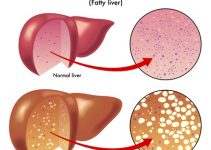Gigantism is a rare disease that is the subject of a lot of research and speculation. Know what is Gigantism, its causes, symptoms, diagnosis and treatment.
Definition of Gigantism
Page Contents
Gigantism Definition is given as an abnormal health condition that leads to excessive growth of a person due to presence of too much growth hormone in the body. This unique disorder is also known as Giantism.
This is an extremely rare disorder. Only 100 cases of this disease have been reported so far.
What Causes Gigantism?
As aforesaid, this disease arises due to the presence of growth hormones in abnormal quantities. Growth Hormones may be released in abnormal quantities due to health complications like
- Benign (non-cancerous) pituitary gland tumor
- McCune –Albright Syndrome (MAS)
- Carney Complex
- Neurofibromatosis
- Multiple Endocrine Neoplasia Type 1 (MEN-1)
Pituitary tumor is one of the main causes of Gigantism in children.
Gigantism Symptoms
Typically, abnormal height is the most prominent signs of Gigantism disorder. The disease becomes evident in a child from a very early age. The child grows noticeably taller than his or her age and the growth is not only reflected in stature but also the organs and muscles. At full growth, the individual usually stands at over seven feet.
Some other symptoms of Gigantism include
- Retarded puberty
- Headache
- Difficulties in peripheral (side) vision
- Double vision
- Fatigue
- Thick facial characteristics
- A large jaw
- Thickness of toes and fingers
- Excessive sweating
- Big hands and feet
In women, the disease may also cause irregular menstrual periods and abnormal release of breast milk.
Gigantism Diagnosis
Gigantism is initially diagnosed by observation of the physical characteristics of the individual. Further testing is done by an MRI or CT scan of the head. Imaging helps reveal pituitary tumors. The condition also becomes apparent if an oral glucose test fails to inhibit serum growth hormone. Tests may also be conducted to check if the person has increased Insulin Growth Factor-I (IGF-I) or Prolactin levels.
Gigantism Treatment
Treatment for Gigantism mainly involves use of medicines, surgery and radiation therapy.
Medications
Dopamine drugs such as Cabergoline and Mesylate are normally used to lower release of growth hormones. These are, however, less effective than medicines like Pegvisomant or somatostatin analogs (Lanreotide or Octreotide). Pegvisomant obstructs the side effects of growth hormone release.
Surgery
Surgery for treatment of Gigantism is done in cases where tests reveal the presence of a Pituitary tumor. The aim of operation is to remove the tumor and reduce release of growth hormones.
Radiation Therapy
Radiation therapy is successful in making growth hormone levels normal. However, this method gives rise to various side effects like obesity, emotional alterations and learning disabilities in children. Moreover, it takes anywhere from five to ten years for the effects to show up. It also results in reduced levels of other pituitary hormones. This is the reason why it is kept as a last resort if all other ways of treatment fail.
People with Gigantism Disease
There have been quite a few people who developed this disorder. The most interesting person with this disease was Robert Wadlow. Born in Alton, Illinois the man was also referred to as “The Alton Giant”. He died of an infected scald when only 22 years old. At the time of his death, Alton stood at a gigantic eight feet and eleven inches. He was six feet tall when only eight years of age. He is known as the tallest man to have ever lived on Earth.
Sandy Allen, the tallest woman of the world, stood at seven feet, seven inches at maturity. Her extraordinary height was the result of a pea-sized tumor that developed in her pituitary gland. As aforementioned, this disorder gives rise to many discomforting symptoms. Allen was confined to a wheelchair for most of her life and suffered from respiratory difficulties, frequent infections, kidney failure and diabetes. She died at 53 years of age in 2008.

Picture 1 – Andre the Gaint
Source – thefastertimes
A more famous Gigantism sufferer is Andre Roussimoff. Famously known as “Andre the Giant”, Roussimoff is a professional wrestler who is seen in movies and is also a WWF Champion.
Gigantism Complications
Delayed Puberty is the main complication of this disease. Radiation Therapy and Surgery may lead to reduced level of pituitary hormones. Low pituitary level may give rise to other complications of Gigantism like
- Hypothyroidism
- Hypogonadism
- Adrenal Insufficiency
In rare cases, effects of Gigantism may involve the development of Diabetes Insipidus. According to an acromegalic gigantism specialist known as John Wass, excessive growth can lead to early death. High blood pressure in the legs can cause varicose ulcers. An infection in a varicose ulcer can cause death of the suffering individual.
Gigantism Prognosis
This disorder has a good prognosis. A surgical operation is usually successful in limiting Pituitary tumor and reducing production of excessive amounts of growth hormone.
Gigantism and Acromegaly
Gigantism may be confused with Acromegaly. These are entirely different conditions though the difference may not be noticeable to a casual observer. Medical researchers define Gigantism as a disease that arises due to an abnormal release of pituitary hormones before normal bone growth. Acromegaly is the name given to the condition in which pituitary release happens after cessation of normal bone growth.
Acromegalic Gigantism
Acromegalic Gigantism is the name given to the disorder that results from the development of a tumor in the pituitary gland. The tumor grows abnormally large in size and destroys the pituitary gland cells that stimulate sex hormone release. Due to this, the bones never stop growing.
Gigantism Pictures
Want to check how people affected with Gigantism look like? Check out these pictures of Gigantism. These Gigantism images will give you an idea about the condition.

Picture 2 – Gigantism Image
Source – gigantism.com

Picture 3 – Gigantism Photo
Source – withfriendship
If your child is showing characteristics of excessive growth for his or her age, it is best that you get in touch with a doctor. Diagnosed and treated in time, the condition can be cured early and your child will be free from any future complications and grow as healthy as any normal human being.
References:
http://emedicine.medscape.com/article/925446-overview
http://www.ncbi.nlm.nih.gov/pubmedhealth/PMH0002157/
http://en.wikipedia.org/wiki/Gigantism
http://www.umm.edu/ency/article/001174.htm
http://rarediseases.info.nih.gov/GARD/Condition/6506/Gigantism.aspx

